Digital Camera World Verdict
The Sky-Watcher SkyMax-180 PRO is an exemplary performer when imaging the Moon and planets, but it’s also surprisingly adept when observing the brighter deep-sky objects too, despite its large f/15 focal ratio. Given that this Maksutov-Cassegrain isn't supplied with a mount or tripod, we recommend this instrument to seasoned astronomers over beginners. With a good quality mount and accessories to make the most of the optical system, the Sky-Watcher SkyMax-180 PRO is ideal for those looking to take their planetary imaging to the next level, while also offering some latitude for deep-sky work.
Pros
- +
Great-sized aperture
- +
Clear and crisp planetary views
- +
Offers good views of brighter deep-sky objects
Cons
- -
Long cool-down time
- -
Image shifts when focusing
- -
Quite heavy
- -
High price tag given no eyepieces, mount or tripod are supplied
Why you can trust Digital Camera World
The Sky-Watcher SkyMax-180 PRO is famed for its top-of-the-range planetary views, offering spectacular pin-sharp images of a selection of solar system targets with exquisite contrast. While it has a hefty price tag given that next-to-no accessories, mount or tripod are included, the Sky-Watcher SkyMax-180 PRO is featured as one of the best telescopes for astrophotography and stargazing in 2021.
The Sky-Watcher SkyMax-180 PRO is a Maksutov-Cassegrain, which features an optical design that's built to reduce optical defects that plague reflectors. Reflecting telescopes, which incorporate primary and secondary mirrors are highly popular partly because of their low cost. However, with a budget price comes pesky optical distortions that often ruin observations through the field of view: reflectors can be plagued with ailments such as coma, in which objects off the telescope’s primary axis can appear warped, meaning that stars go from looking like points of light to appearing stretched.
While the optical system is best suited for planetary and lunar imaging, the Sky-Watcher SkyMax-180 PRO offers fair views of bright deep-sky targets: the Andromeda Galaxy (Messier 31) and Orion Nebula (Messier 42) are within easy reach of this telescope for those looking for an introduction to deep-sky astrophotography.
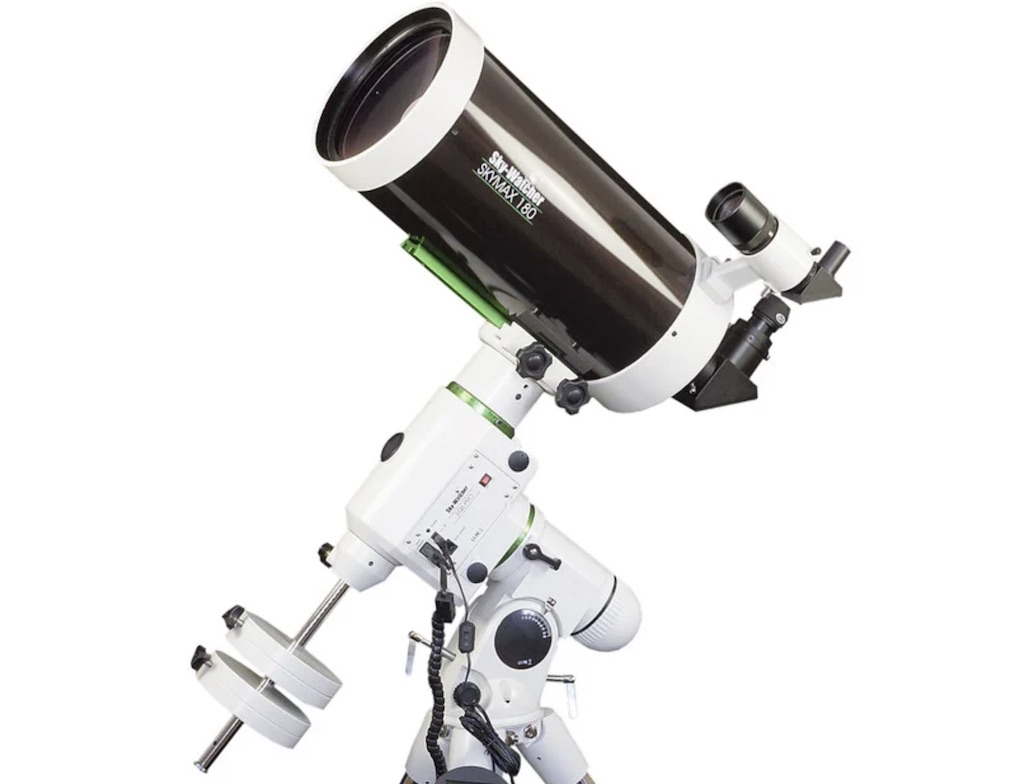
Sky-Watcher SkyMax-180 PRO: Specifications
Optical design: Maksutov-Cassegrain
Aperture: 180mm
Focal length: 2700mm
Focal ratio: f/15
Optical tube length: 500mm
Optical tube weight: 7.8kg
Includes: 28mm eyepiece, 9x50 finderscope, star diagonal
Sky-Watcher SkyMax-180 PRO: Design & key features
The Sky-Watcher SkyMax-180 PRO is heavy but compact, beautifully finished to a high standard and features a smart black and white livery. As previously mentioned, observers will need to further accessorize this telescope, since it comes with very little in the way of add-ons. A high-quality mount is a must to support the 7.8-kilogram optical tube assembly, plus your chosen camera and any filters, eyepieces and other pieces of kit you choose to adorn to it. The telescope is wonderfully versatile with a 1.25-inch adapter and dovetail mounting bar, so there is plenty of scope to push it to its limits.
Previous versions of the SkyMax-180 came with 9mm and 20mm eyepieces that were, quite frankly, of poor quality. Sky-Watcher has chosen to dispose of these, opting for a much better 28mm eyepiece, which also features long eye relief for spectacle wearers for comfortable viewing. The new star diagonal is also an improvement, replacing the flimsy one that came with previous versions of this telescope. We have to say that if you’ve been thinking about buying a SkyMax-180, the improved accessories make it a good time to do so.
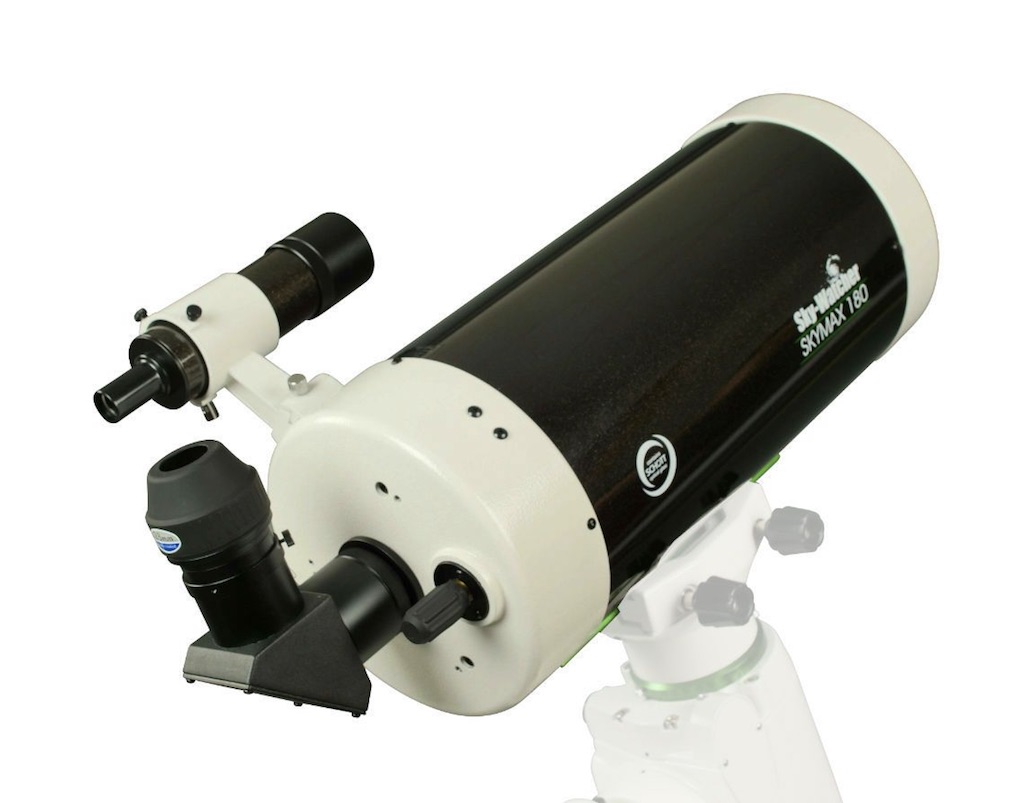
There are some issues, however. For one, the cool-down time is notorious. It’s important to observe or image at ambient temperatures, otherwise the view will be subject to deleterious air currents inside the telescope tube that affect the quality of your observations. We discovered that the cool down time for the SkyMax-180 seems to range anywhere between a 90 minutes and three hours. Of course, how long it takes for the optical tube assembly to cool down also depends upon where you store the telescope – if you have a purpose built observatory, or a safe and secure outhouse in which to keep the SkyMax-180, the ambient temperature will be less and the cool-down time quicker than if you store the telescope inside a warm house.
The telescope’s mirrors are also subject to dew and at the minimum you’ll need to acquire a dew shield to extend over the aperture – for optimum results a dew heater is a serious piece of kit to consider.
The design of this Maksutov-Cassegrain means that the focuser pushes on the primary mirror, moving it back and forth as you make fine adjustments to the focal length to find the focus for any given eyepiece. However, it doesn’t move the mirror along the center axis, but off to the side. This can cause the image to shift – in other words, as you turn the focuser, whatever you are looking at will "slide" in your field of view. In our experience this is a minor niggle, but the best solution is to replace the focuser with a high-quality Crayford with fine-tuning so that you can make minute adjustments without the image dancing around too much.
Sky-Watcher SkyMax-180 PRO: Performance
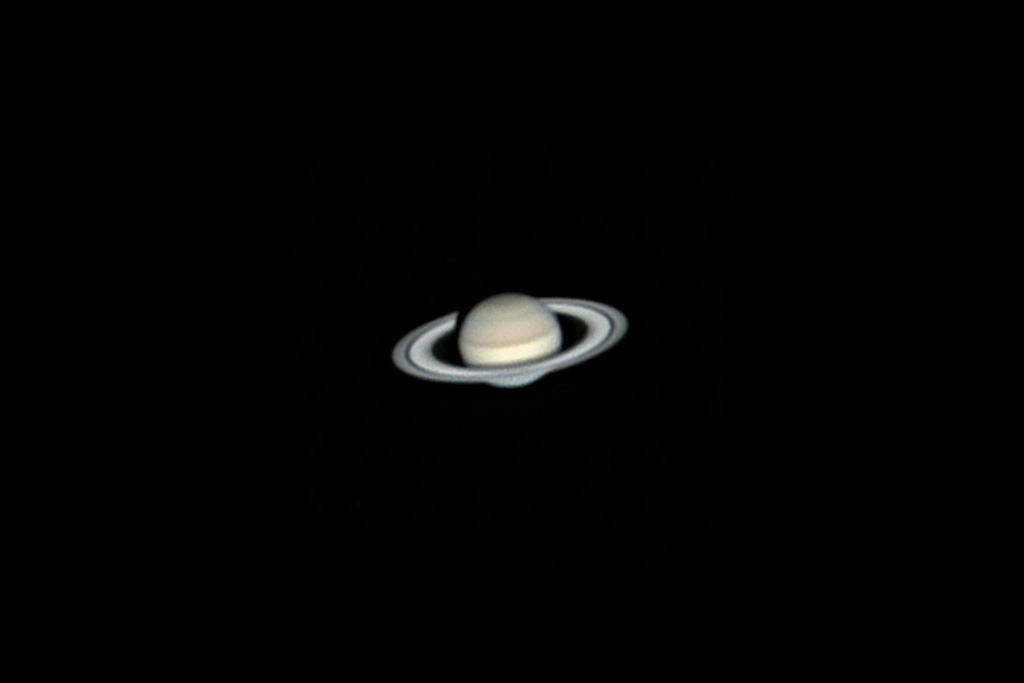
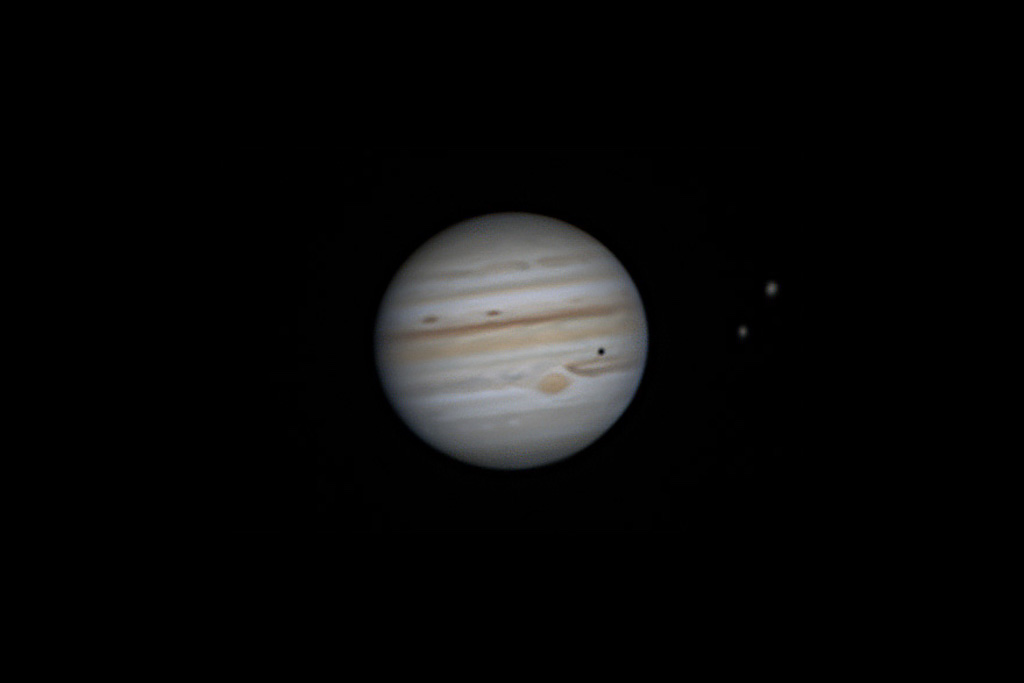
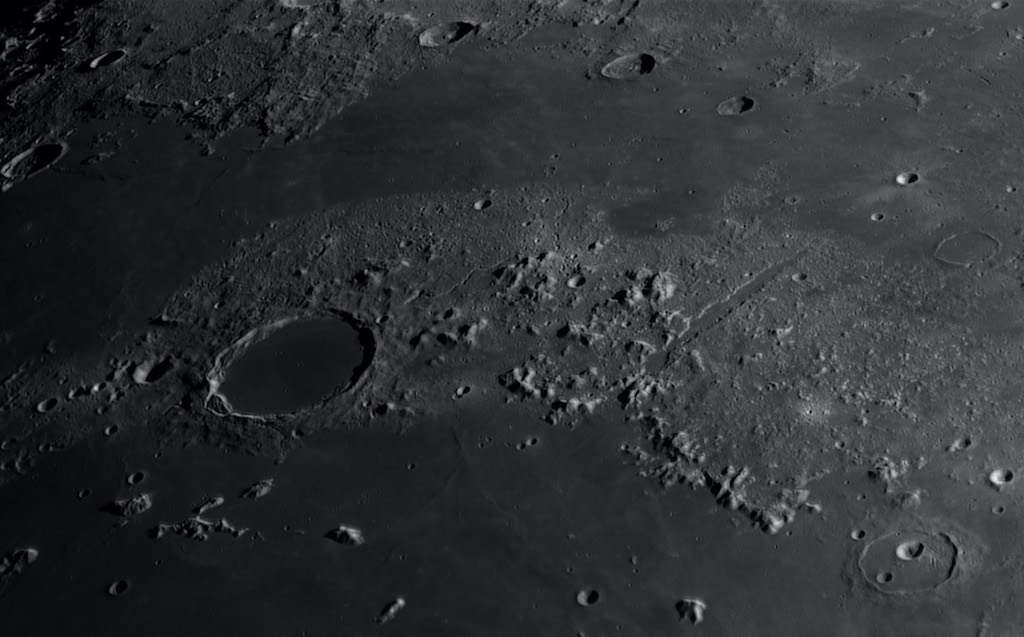
The Sky-Watcher SkyMax-180 PRO’s focal ratio of f/15 (from a focal length of 2,700mm) is very slow, and so this telescope has received the reputation of being a one-trick pony, suitable only for observing or imaging the Moon and the planets. We have to say that views of the solar system are exceptional through this instrument, but we are also impressed by its optical prowess when turning our attention to some of the brighter deep-sky objects, too.
We can see the optical system flexing its "Maksutov muscles" when viewing a star-field: stars appear as pin-points pretty much almost to the very edge of the field of view, with no major distortions. The Orion Nebula, a star-forming region in the constellation of Orion (the Hunter) is truly a breathtaking sight, with almost three-dimensional wisps of nebulosity around the sparkling Trapezium cluster at its center. We did turn our attention to the Pleiades star cluster (Messier 45) in the constellation of Taurus (the Bull), but – as expected – the SkyMax-180 PRO's field of view is too small, although what we did see through the field of view was of awe-inspiring clarity.
The view of the Moon through the SkyMax-180 PRO and a series of additional eyepieces is spectacular, with crisp crater walls, and bright but contrasty plains, and almost has to be seen to be believed. Next-to-no color fringing – which appears as a blue-purple tint around the edge of bright targets – is visible. Astrophotographers won't need to worry about removing this aberration when it comes to processing in a suitable software.
Meanwhile, gas giants Saturn and Jupiter, which were readily observable in the south west, were an incredible sight: the former's impressive ring system could be picked out in high resolution, while sights of Jupiter's atmospheric bands just got even better with the addition of a blue and red filters.
What’s notable, and extremely exceptional, is how even lower power eyepieces can produce significant magnification with this telescope's optical system, and how well the Sky-Watcher SkyMax-180 PRO takes those high magnifications. The telescope offers a lot of detail at fine resolution, whether just through visual observing or imaging, providing views of the night sky that you'll remember for a very long time.
Sky-Watcher SkyMax-180 PRO: Verdict
The Sky-Watcher SkyMax-180 PRO outperforms its reputation as just being a planetary telescope. It’s a "planet killer" for sure, but its adaptability when viewing bright deep-sky objects astounds. Views are crystal clear, with excellent contrast and no pesky distortion to speak of – observers should look to accessorize to avoid missing out on what this instrument offers on top of the supplied eyepiece.
The telescope's issues are of a more finicky nature, with a longer-than-average cool-down time and a problematic image shift when bringing your chosen target into focus. However, if you can get past those niggles, what you will find is a top-notch planetary performer with added versatility that enables astrophotographers to produce breathtaking images.
Read more:
The best lenses for astrophotography
The best camera equipment for astrophotography
The best telescopes for astrophotography
Gemma is content director of science and space magazines How It Works and All About Space, history magazines All About History and History of War as well as Science, Technology, Engineering, Arts and Mathematics (STEAM) kids education brand Future Genius. She is the author of several books including "Quantum Physics in Minutes", "Haynes Owners’ Workshop Manual to the Large Hadron Collider" and "Haynes Owners’ Workshop Manual to the Milky Way". She holds a degree in physical sciences, a Master’s in astrophysics and a PhD in computational astrophysics. She was elected as a fellow of the Royal Astronomical Society in 2011. Previously, she worked for Nature's journal, Scientific Reports, and created scientific industry reports for the Institute of Physics and the British Antarctic Survey. She has covered stories and features for publications such as Physics World, Astronomy Now and Astrobiology Magazine.



